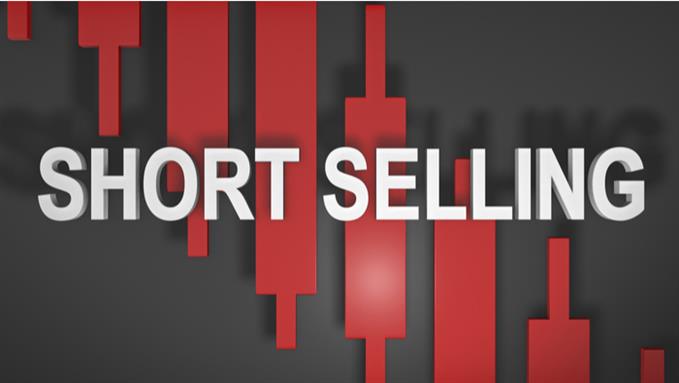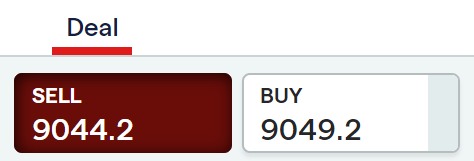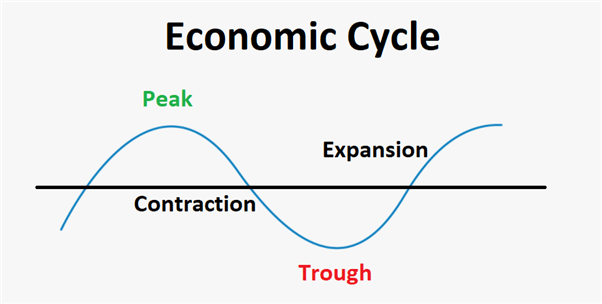Short selling is somewhat of a polarizing activity as it involves betting against a stock or other asset; but it can also form part of a well-thought out trading or investment strategy. This article explains what short selling is, with the help of practical examples.

What is Short Selling?
Short selling is the process of borrowing an asset (normally shares) and immediately selling it in the open market with the view to purchase the asset back, at a later date, at a lower price before returning it to the lender. The ‘short seller’ receives the difference between the higher selling price and lower purchase price, minus any interest and fees.

Short selling is generally referred to in the stock market but can be applied to a whole suite of financial products provided by a broker.
Short Selling Examples
An astute investor has conducted extensive research on company ABC and has come to the conclusion that the current share price of ABC at $50 is way above its intrinsic value of around $20. Hence, the investor decides to short ABC by calling his broker asking to borrow and immediately sell 20 shares of ABC at a cost of $1,000. The analysis turned out to be correct and after a week the share price of ABC dropped to $20, at which point the 20 shares were re-purchased and returned to the broker to complete the transaction.
Read our top 3 ways to value a stock in our comprehensive trader’s guide to stock valuation
Example 1: (Ideal Scenario) Borrowing 20 shares of ABC @ $50 per share
- Sold 20 shares of ABC @$50 per share = proceeds of $1,000
- Bought back 20 shares of ABC @ $20 per share =cost of $400
- Interest and fees charged by the broker = fees of $50
- Profit = $1000- $400 - $50 =$550 (55%)

Example 2: (Unfavorable Scenario) Borrowing 20 shares of ABC @ $50 per share
- Sold 20 shares of ABC @$50 per share = proceeds of $1,000
- Bought back 20 shares of ABC @ $80 per share =cost of $1,600
- Interest and fees charged by the broker = fees of $50
- Profit = $1000- $1,600 - $50 =$-650 (-65%)

However, technological innovation has resulted in the universal adoption of online trading - allowing account holders to simply press the ‘sell’ button whenever looking to place a short trade. This is dependent on the broker being able to borrow enough of the underlying asset (usually stocks), to facilitate the transaction.




Positives of Short Selling
Short selling allows traders to benefit from price action not only when prices are rising but also when they are falling. This drastically increases the set of opportunities available to traders.
Capitalizing on Market Cycles: Financial markets, much like the broader economy, experiences ups and downs or cycles. Optimism runs high when markets experience a bull run but the good times don’t last forever and often there is a pull back, or trend reversal, followed by a longer term downtrend. Trend Traders can look to execute technical or fundamental trading strategies in falling markets in much the same way they could in advancing markets, by going short.

Managing Risk Through Hedging: Traditional stock investing involves buying and holding a stock for a number of years in the hope that the price of the stock appreciates, while simply having to endure losses when the share price drops. Investors and traders are able to reduce their exposure in a declining stock by shorting the same stock (partial hedging). A great example can be seen when Individuals have a long term portfolio of shares and when the market crashes, may look to go short in the near term to soften the paper losses on the long term portfolio. Read our trader’s guide on how to short sell stocks in falling markets.
Forms Part of a Legitimate Trading Strategy: Fundamental analysts and traders study company financial statements and the industries in which they operate to establish which companies are under or overvalued. Traders and investors that are of the opinion that an overvalued company is likely to see a drop in share price towards its intrinsic/fundamental value, have the option to short this company.




Risks Associated with Short Selling
The risks associated with short selling can be detrimental and warrant closer inspection.
Potential for Unlimited Losses: Losses are capped at zero when going long on stocks because once a stock drops to zero it cannot go any lower. However, since there is no cap on how high a stock price can go, losses on short positions are infinite. Therefore, short traders ought to consider implementing risk management techniques to limit downside risk.
Threat of a Short Squeeze: A short squeeze takes place when there is sizeable short interest in a stock but the stock price rises higher and higher. This can be due to rumors of a takeover bid or a surprise earnings beat or a number of other factors that result in a stock buying frenzy. To make matters worse for short sellers, the higher prices go, more short sellers receive margin calls and are forced to buy to close their positions; further elevating the share price. Online retail trader communities such as those found on Twitter or Reddit (WallStreetBets) have previously targeted shares that are heavily shorted, in an attempt to bring about a short squeeze. Read our article on meme stocks to find out why.
Borrowing Limitations: In order for retail traders to short stocks, the broker needs to be able to borrow the necessary number of shares beforehand. In fast falling markets, holders of the actual shares may wish to sell, meaning that the broker has to return those shares and thus cannot provide the opportunity for clients to short the stock without taking on additional risk. Normally, this would result in the inability to short the company until market conditions change and more borrow becomes available to the market.
Controversy Around Short Selling
The practice of short selling is no stranger to controversy and many are of the opinion that it adds little or no value other than to provide liquidity. Short selling gets a bad name because short sellers are essentially betting against a company and if the share price of that company tanks there are real-life consequences for all stakeholders. Salaries and bonuses are revised downwards, hiring freezes are implemented and, ultimately, workers face the threat of retrenchment.
Another reason why short selling is viewed in a negative light is due to the rise of ‘predatory’ hedge funds that specifically seek to short overvalued or unscrupulous companies. In the past, representatives of such hedge funds appeared in the media levelling scathing accusations against company management, often with a focus on corporate governance failures, which tends to come full-circle, resulting in panic selling and a lower share price.






